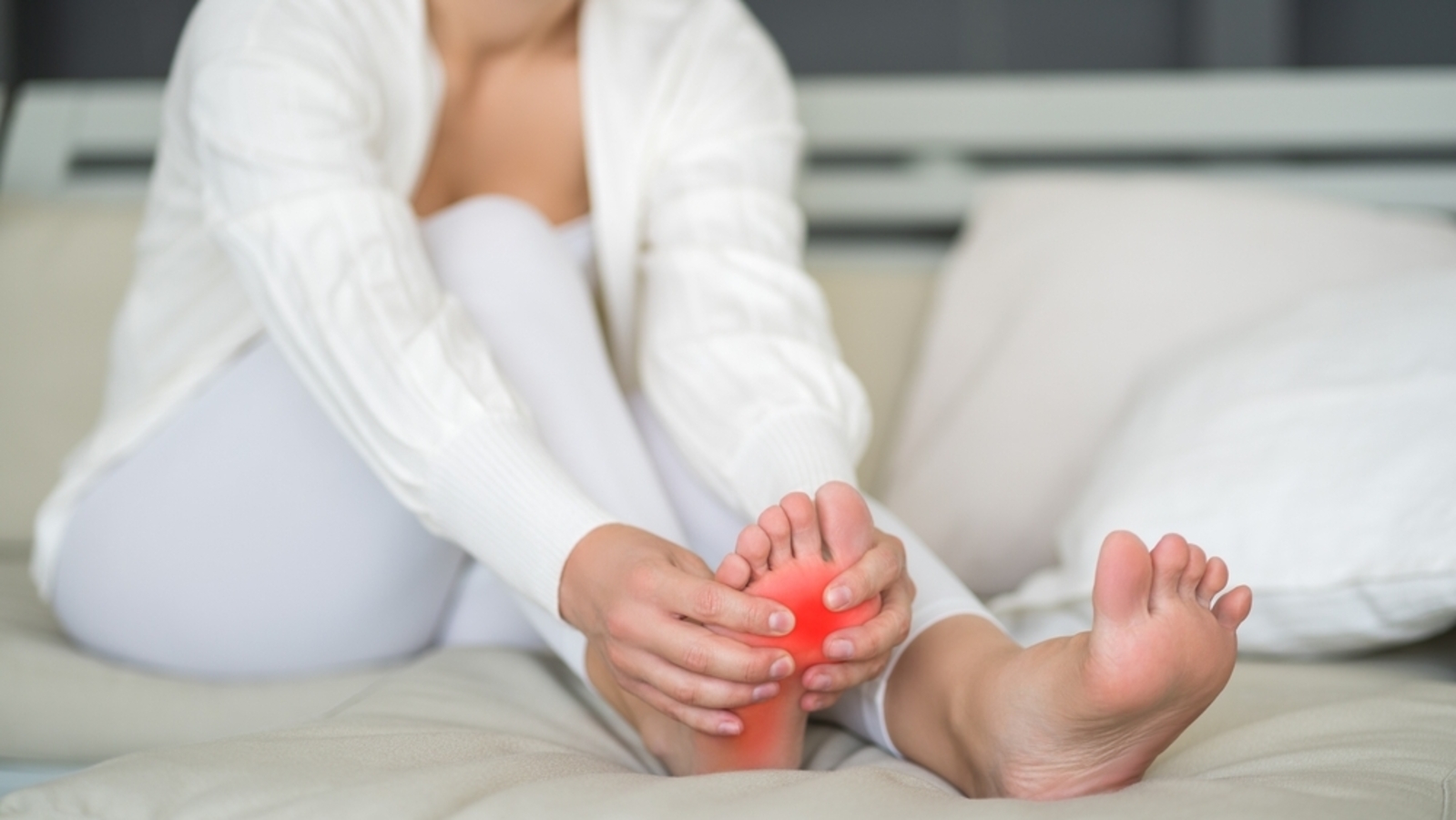
Women, don’t ignore foot pain: Doctor shares how it silently impacts overall health, from posture to hormones
How did your country report this? Share your view in the comments.
Diverging Reports Breakdown
Women, don’t ignore foot pain: Doctor shares how it silently impacts overall health, from posture to hormones
Foot pain isn’t just a localised issue; in fact, it affects far more than just your steps. Dr Garima Gupta, Senior Consultant at Nivaan Care, shared with HT Lifestyle how chronic foot pain in women can impact everything from posture and pelvic health to hormonal balance. Foot pain is often a silent disruptor of everyday routine. Women often experience heels that hurt or stiffness in their soles (especially first thing in the morning or after long hours in the kitchen) to hormonal shifts during periods, pregnancy or menopause. Women with PCOS often have foot pain that is unexplained or tissue recovery, and symptoms that derive from systemic inflammation and insulin resistance. Women who have a lot of plates that are spinning can make considerable difference in body language and behaviour for a long period of time. Women in their 30’s and 40’s in order to maintain an active arch can activate foot musculature, could be useful for women in the 30’s and 40’S.
Foot pain isn’t just a localised issue; in fact, it affects far more than just your steps. Dr Garima Gupta explained, “Women frequently suffer with foot pain silently, attributing it to ‘normal’.Chronic foot pain is often a silent disruptor of everyday routine. Women often experience inconveniences ranging from heels that hurt or stiffness in their soles (especially first thing in the morning or after long hours in the kitchen) to hormonal shifts during periods, pregnancy or menopause; women’s feet go through a lot. Foot pain is not really a matter of localisation but how the entire body feels- postures, movements, and even hormones.’
Dr Garima Gupta shared a detailed guide with us, covering the reasons and consequences of foot pain:
Reasons for foot pain
1. Hormonal fluctuations
Hormones like relaxin and estrogen levels rise during menstruation, pregnancy, and in the perimenopause, contributing to extra ligament laxity.
The softening affects the pelvis, but also the small ligaments in the feet. This laxity becomes evident in the form of flatfoot or plantar fasciitis, and it alters posture and gait.
Solutions:
Take care of your foot arches during hormonal changes. Explore a footwear change in the stage of pregnancy or menopause, consider arch supportive footwear and/or customised orthotics.
Yoga poses such as Tadasana well as standing on one foot can activate foot musculature, could be useful for women in their 30’s and 40’s in order to maintain an active arch.
Tadasana supports foot health.(Shutterstock)
2. Long hours of standing for household work
In India, there are factors like long exposure to standing due to housework, ill-fitting, narrow-sole footwear, or walking barefoot on hard marble floors indoors.
All these cultural factors contribute to chronically stressful feet. As a result, this impacts pelvic posture, mobility, and spinal alignment.
Solutions:
Implement deliberate foot breaks: regular foot massaging with a textured foot roller in the kitchen or workstation.
If standing for long periods, use silicone heel cups, or other gel inserts.
10 minutes of earthing (daily barefoot walking on grass) can help recalibrate the body’s biomechanics and relieve foot tension.
3. PCOS
Women with PCOS often have foot pain that is unexplained or tissue recovery, burning feelings, and symptoms that derive from systemic inflammation and insulin resistance.
Inflammation restricts activities and worsens metabolic markers, increasing the risk of plantar fasciitis and stiffness in the Achilles’ tendons.
Solutions:
Implement a level of integrated elevation, not only orthopaedic but metabolic, for women with PCOS or metabolic syndrome who experience foot pain.
Under supervision, anti-inflammatory diet, magnesium supplementation, and low-impact movement, such as aqua therapy or rebounding can decrease the load experienced on joins and improve insulin sensitivity.
Consequences of foot pain
Poor back posture can be caused by foot pain also.(Shutterstock)
1. Poor posture
Chronic foot pain can gradually change posture (i.e.) shoulders come forward, step length shortens, head goes down.
All of this can, over time, start to change how a woman presents herself to the world, and subsequently can change her self image and confidence levels. Studies have found a direct relationship between posture and cortisol levels, which can affect mood, weight, and hormone levels.
Solutions:
Continuing Pilates or even pursuing some form of posture-alignment therapy can help, while also improving mental well-being.
10-minute posture resets like wall angels, or neck lengthening stretches, or lying flat with feet on the wall can make a considerable difference in body language behaviour and mood management for women who have a lot of plates that they are spinning.
2. Poor pelvic floor health
When foot pain alters your gait, the change in movement will cause your body to stabilise by engaging muscles (e.g. glutes and pelvic floor) in a dysfunctional manner.
This will either lead to pelvic floor tightness (in the case of painful periods), or weakness (in the case of urinary incontinence).
Solutions:
Work with a physiotherapist to assess foot posture and pelvic alignment under expert guidance.
Diaphragmatic breathing and foot-to-core integration exercises (eg: scrunching toes while deep breathing) are a great way to re-integrate pelvic floor activity with posture.
ALSO READ: Do all women gain weight during menopause? Doctor explains and suggests 10 tips to manage weight
Note to readers: This article is for informational purposes only and not a substitute for professional medical advice. Always seek the advice of your doctor with any questions about a medical condition.
